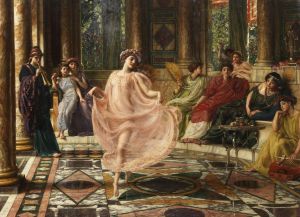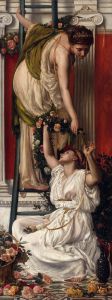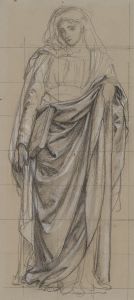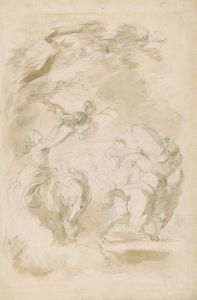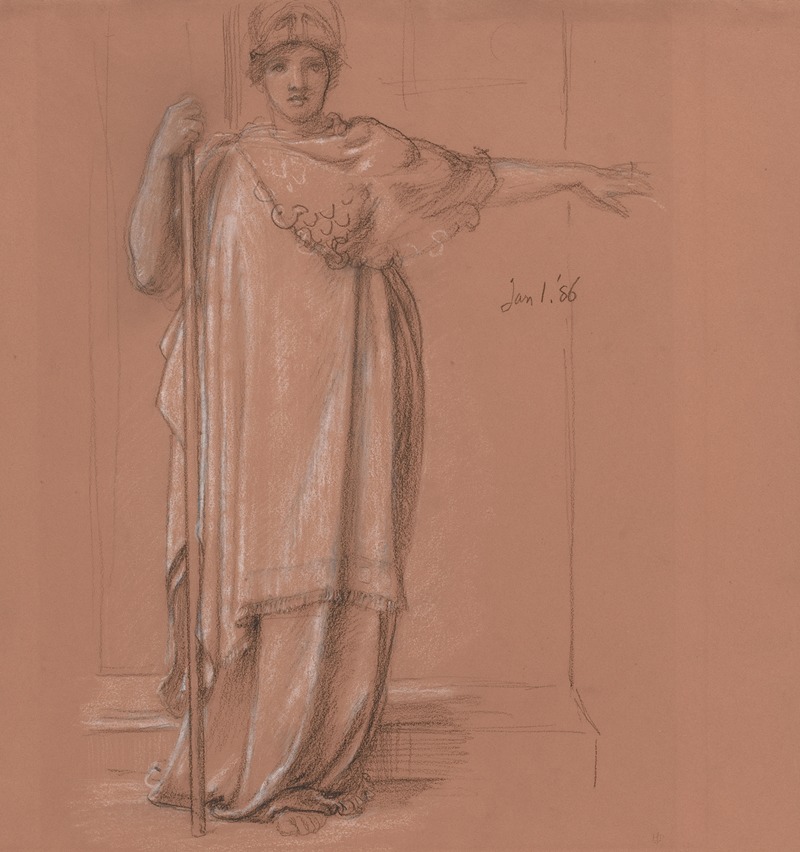
Minerva
A hand-painted replica of Edward John Poynter’s masterpiece Minerva, meticulously crafted by professional artists to capture the true essence of the original. Each piece is created with museum-quality canvas and rare mineral pigments, carefully painted by experienced artists with delicate brushstrokes and rich, layered colors to perfectly recreate the texture of the original artwork. Unlike machine-printed reproductions, this hand-painted version brings the painting to life, infused with the artist’s emotions and skill in every stroke. Whether for personal collection or home decoration, it instantly elevates the artistic atmosphere of any space.
Edward John Poynter's painting "Minerva" is a notable work by the British artist, who was an influential figure in the Victorian art scene. Poynter, born in 1836, was known for his classical style and meticulous attention to detail, which is evident in his depiction of mythological and historical subjects. "Minerva" is one of his works that exemplifies his interest in classical mythology and the representation of deities.
Minerva, the Roman goddess of wisdom, war, and the arts, is the central figure in this painting. She is often equated with the Greek goddess Athena and is traditionally depicted as a strong and wise figure, embodying both intellectual and martial prowess. In Poynter's portrayal, Minerva is likely depicted with her characteristic attributes, which typically include a helmet, a shield, and a spear, symbolizing her warrior aspect, as well as an owl, representing wisdom.
Poynter's "Minerva" reflects the Victorian fascination with classical antiquity and the revival of classical themes in art. This period saw a resurgence of interest in ancient Greek and Roman culture, which was reflected in the art, literature, and architecture of the time. Artists like Poynter were drawn to these themes, finding inspiration in the ideals of beauty, heroism, and intellectual achievement that they represented.
The painting is characterized by Poynter's precise and academic style, which he developed through his education and career. He studied at the Royal Academy of Arts in London and later in Paris, where he was influenced by the works of the French academic painters. Poynter's work is marked by its careful composition, attention to anatomical accuracy, and the use of rich, vibrant colors.
Throughout his career, Poynter held several prestigious positions, including serving as the President of the Royal Academy and as the Director of the National Gallery in London. His contributions to the art world were significant, and his works, including "Minerva," are considered important examples of Victorian classical painting.
While specific details about the creation and current location of "Minerva" may not be widely documented, Poynter's work remains influential. His paintings are held in various collections, and his legacy continues to be studied by art historians and appreciated by art enthusiasts.
In summary, Edward John Poynter's "Minerva" is a testament to the artist's skill and the Victorian era's engagement with classical themes. Through his depiction of the Roman goddess, Poynter captures the essence of Minerva's dual nature as a deity of wisdom and war, reflecting the broader cultural interests of his time.









